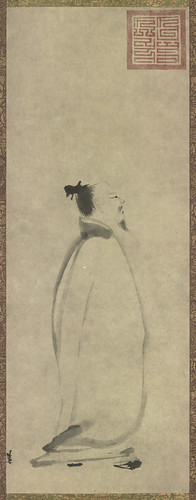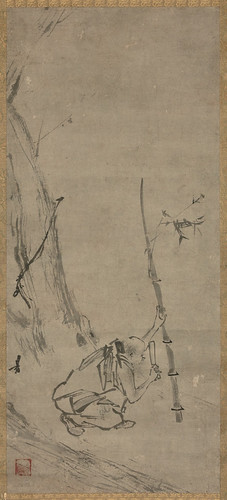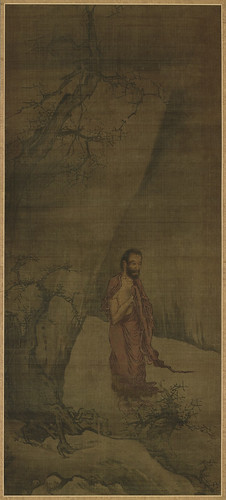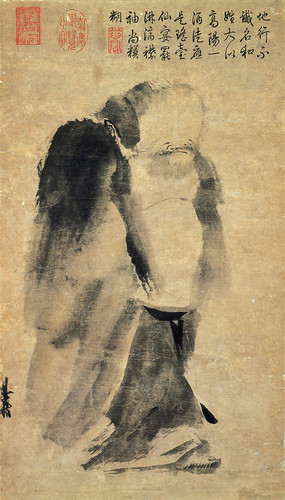Liang Kai (梁楷, c.1140-1210) was a Chinese painter known primarily for paintings that reflect his interest in Chan Buddhism.
Liang Kai was originally a painter in attendance at the imperial painting academy in Hangzhou during the Southern Song period. He learned painting from Jia Shigu (賈師古, fl. mid-12th c.), but he outdid his teacher in being able to convey the grace and bearing of figures. In 1210, he was promoted to the rank of Painter-in-Attendance at court and bestowed with the honored Golden Belt. For some reason, however, he refused and left the court with the belt hanging on the academy wall. Taking to a life of drinking and painting, he called himself "Madman Liang (梁瘋子)." After he left the academy, Liang Kai became a Chan Buddhist priest in a temple near Hangzhou, and his later paintings, those that reflect his involvement with Buddhism, were of most interest. Because Chan painting generally, and that of the Southern Song in particular, has not been popular with the Chinese collector of more restrained Confucian sensibility, most of the extant works that can be accepted as by Liang Kai are now in Japan. They have been much prized and imitated there.
Artworks by Liang Kai



